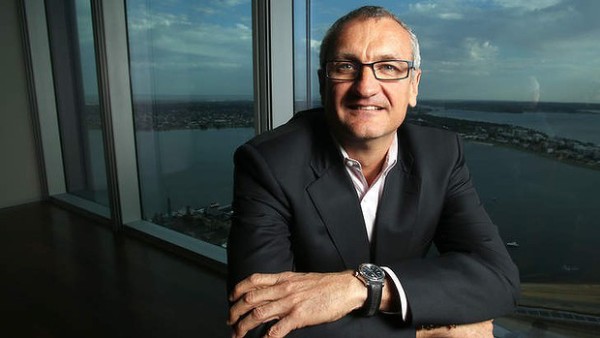 Miner BHP Billiton is confident it can ”close the gap” with iron ore arch-rival Rio Tinto on margin per tonne within a few years.
Miner BHP Billiton is confident it can ”close the gap” with iron ore arch-rival Rio Tinto on margin per tonne within a few years.
And it is likely to develop the $20 billion outer-harbour project at Port Hedland rather than expand its inner-harbour operation if it moves to produce beyond its current annual run rate target of 270 million tonnes.
BHP president of iron ore Jimmy Wilson says the miner is trailing Rio on margin per tonne, and ”our desire absolutely is to close that gap”.
He said the miner would never be in a competition with Rio on volumes but stressed ”where we would like to compete is on the cost of production side, more importantly, the margin per tonne that we make”.
”While we are marginally behind Rio at the moment, we’ve got to back the fact that we are going to eliminate that gap in the foreseeable future,” he says.
”What is the foreseeable future? I’d be disappointed if it took more than a couple of years.
”I do respect our competitors – Rio, Fortescue, Vale – [and] none of them is standing still either. So, I think, at the end of the day, you are going to see an improvement come through for all of those businesses.”
Deutsche Bank mining analyst Paul Young puts BHP’s all-in cash costs at $US51 a tonne, against Rio’s $US45 a tonne, based on the last December-half results.
Mr Young says the two miners are neck and neck on most key cost-of-production metrics, but noted a $US10-a-tonne differential in so-called C1 costs.
”I don’t think they can fully close the gap but I think they can reduce the gap by at least half, or about $US5 a tonne,” Mr Young said.
The C1 cost measure usually reported by miners, refers to the basic production costs excluding one-time charges, such as royalties, depreciation or exploration costs.
Mr Young says C1 costs were about $US18.70 a tonne for Rio and $US29.30 a tonne for BHP.
He attributes about $US5 per tonne of the difference to BHP’s spike in strip ratios at Newman and the recently opened Jimblebar ($US1 to $US2 a tonne), the use of mobile crushers during the period ($US1 to $US2 a tonne) and full expensing of expansion costs ($US1 a tonne).
”We think BHP can close the gap by $US3 to $US5 a tonne by reversing these items, and can lower unit cost further as its average strip ratio is lower, it has fewer mines and has no wet processing,” Mr Young said.
”But, we think Rio can drive costs down at least another $US2 to $US3 a tonne ($US600 million to $US900 million benefit) through automation, and further benefits from economies of scale, blending and newer mines.”
Mr Young puts the other $US5 of the unit cost differential down in the main to Rio’s greater economies of scale, shorter haul distances, lower mining costs and its blending facilities at port, which means no double-handling at mining hubs.
”Also Rio is three to five years ahead on automation, its ports are not tidal constrained and it has a superior product with the Pilbara blend,” Mr Young says.
Deutsche used the December-half results in conjunction with the average iron ore spot price of $US134 a tonne and an exchange rate of about US92¢ in the modelling.
The plunge in the iron ore price this year – about 30 per cent to $US96 a tonne – has not rattled BHP to the same extent as it has higher-cost producers, but it has provided the miner an opportunity to continue to focus on keeping costs to a minimum.
BHP is raising iron ore production to an annual rate of 270 million tonnes but is yet to put a date on achieving the target. It anticipates production of 217 million tonnes of ore for the financial year just gone, up on 187 million tonnes in 2012-13, and a far cry from the 72.5 million tonnes it posted in 2002.
Rio is tipping current full-year production of 295 million tonnes.
BHP has a dual-harbour strategy focused on maximising throughput in the inner harbour to hit 270 million tonnes a year, before deciding whether it needs additional capacity in the outer harbour, which has been designed to add 100 million tonnes of production. It shelved the outer-harbour project in 2012.
But to raise production beyond 270 million tonnes a year, BHP will need either to tap options for two additional berths in the inner harbour in Port Hedland in a $US600 million to $US800 million development, or resurrect the $20 billion outer harbour project.
It seems the miner is leaning towards the latter.
”We want to max out the inner harbour, then we’ll go to the outer harbour,” Mr Wilson said. ”[But] putting additional capacity into the inner harbour is quite unlikely.”
Source: The Sydney Morning Herald